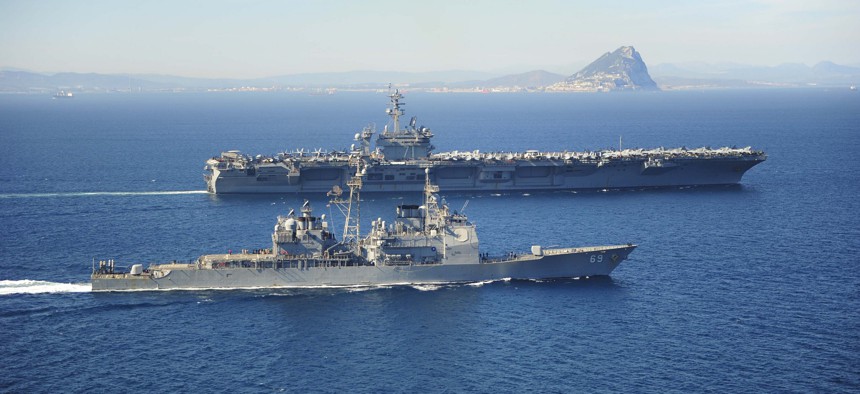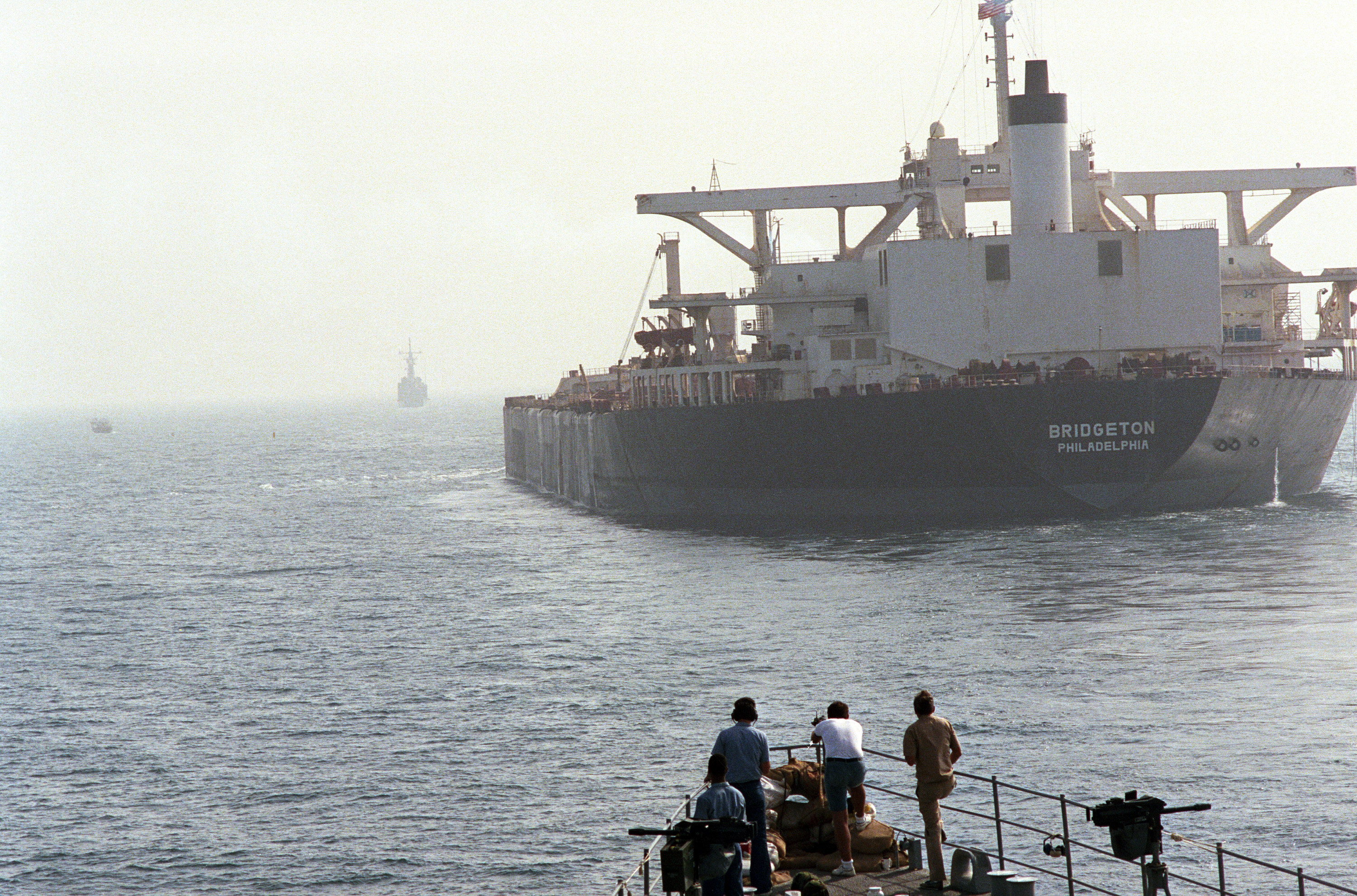
The Ticonderoga-class guided missile cruiser USS Vicksburg (CG 69) escorts the Nimitz-class aircraft carrier USS Theodore Roosevelt (CVN 71) as they pass the Rock of Gibraltar while transiting the Strait of Gibraltar. U.S. Navy photo by Mass Communication Specialist Seaman Anthony Hopkins II/
What’s the Difference Between ‘Accompanying’ and ‘Escorting’ a Ship?
When Pentagon officials announced that they would increase protection for U.S.-flagged vessels in the Strait of Hormuz, they also introduced a bit of confusion.
U.S. Navy sailors know what it means to escort another vessel. Generally speaking, a warship meets up with another ship, or even a group of them, and together they set out on a voyage, matching courses and speeds for most of the way. That’s what happens when an aircraft carrier deploys with its battle group; that’s what happened when U.S. warships shepherded tanker convoys through the war-wracked Persian Gulf of the late 1980s.
But when Pentagon officials announced yesterday that the Navy would be increasing the protection given to U.S.-flagged ships passing through the Strait of Hormuz, they used a different word: “accompany.” And it turns out they meant something a bit different from the far more commonly used “escort.”
A spokesman for the Navy’s Fifth Fleet, Cmdr. Kevin Stephens, explained, “U.S. naval forces will transit the strait along with and nearby such shipping, although it is not as though they’ll necessarily be in some sort of formation.”
Another defense official added a bit more clarity. “Accompanying is basically a step down from escorting,” the official said. “The U.S. Navy ships will be in the same general area as the U.S.-flagged merchant vessels and are there to ensure a safe flow of maritime traffic in the Strait of Hormuz.”
Leadership Briefing: Join Navy Secretary Ray Mabus on May 20 for a breakfast conversation with Defense One’s Executive Editor Kevin Baron. Register now .
“It’s not ‘get in a convoy,’” the official said. “This is part of the Navy’s job. This is what we’ve been doing for a long time.”
Indeed, the Navy has been patrolling the waters in and around the Persian Gulf since World War II, as the importance of the area’s petroleum and natural gas supplies rose and the British Empire’s sway over the region waned. But the area also saw the biggest convoy operation of the post-war era. Operation Earnest Will was launched in 1987, after Kuwait persuaded a reluctant United States to protect tankers moving through a Gulf turned deadly during the Iran-Iraq War.

1987: The guided missile destroyer USS Kidd (DDG 993) escorts the reflagged Kuwaiti tanker Bridgeton as it moves through the Persian Gulf. (U.S. Navy photo by PH2 Thomas Tolliver)
After Kuwait transferred a host of its ships to U.S. flag, American warships began escorting them from the Arabian Sea, through the Strait of Hormuz, to their destinations inside the Gulf. Once laden with their fossil fuels, the commercial vessels would be herded back down the waterway, through the Hormuz chokepoint, and out to the open sea. Inbound convoys assembled in the Gulf of Oman, which became so crowded with ships that wags dubbed it the “K-Mart parking lot.”
The current operation is far less intensive; the Navy appears to be merely providing a thicker blanket of protection for U.S. ships without formal convoys or even formation steaming. But somewhere, someone is no doubt dusting off convoy doctrine publications and reviewing lessons learned a quarter-century ago.




